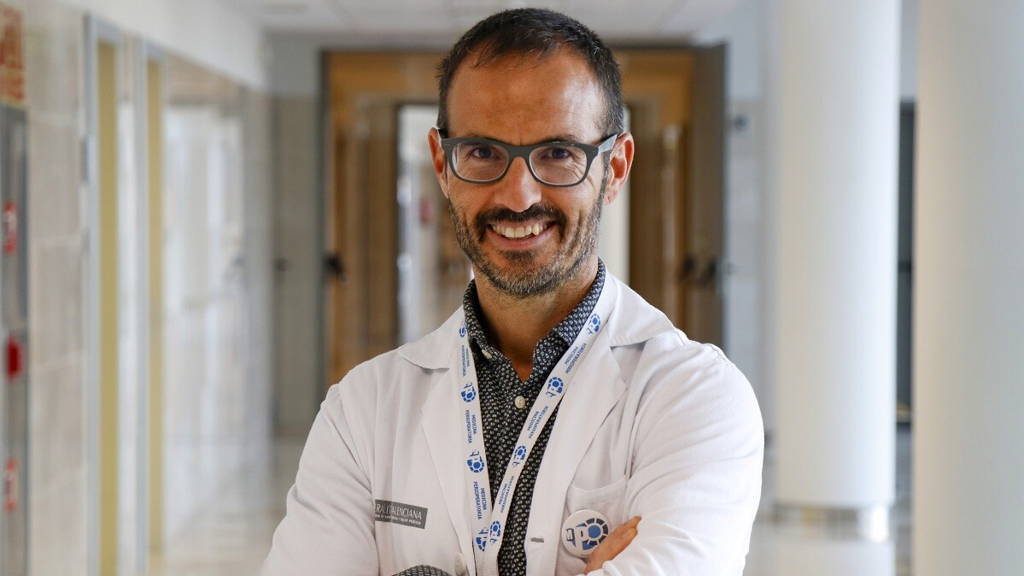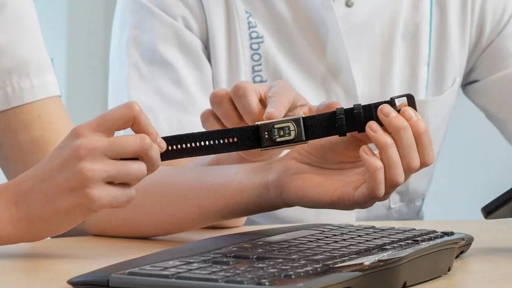"In Spain, one of our greatest challenges is meeting the growing demand for surgical procedures," outlines Díaz-Cambronero. "This demands considerable management capacity. Additionally, we must ensure the quality of care and patient safety remain paramount. Moreover, we aim to continually enhance the patient experience and engagement throughout the process. Telemonitoring offers a solution to all these objectives."
Hospital La Fe is one of Spain's largest hospitals and serves as a reference center for various surgical procedures. A reference center comprises a team of specialists and paramedics specializing in a particular condition, recognized by the government. With 1,100 single beds for hospitalization, over 50 operating rooms, and approximately 70 intensive care units, the hospital performs around 25,000 to 30,000 surgical procedures annually. The perioperative medicine department admits approximately 600 patients annually for major oncological abdominal surgeries. Perioperative care encompasses preoperative patient care and risk assessment, intraoperative care, and postoperative care.
"In our department, we've established a continuous perioperative care trajectory, from diagnosis to full recovery," continues Díaz-Cambronero. "Continuous remote monitoring of patients' health data can improve their condition and engagement. This enables healthcare professionals to make better, tailored decisions for each individual patient. The real-time information provided by telemonitoring allows us to adjust treatments, predict potential issues, and ensure personalized care plans."
Implementing Telecare
A crucial tool in telemonitoring is the smartwatch. Over recent years, smartwatches have enhanced their capability to continuously assess various health data remotely. This ongoing monitoring of health data has opened a new gateway for healthcare delivery, as Díaz-Cambronero acknowledges: "Smartwatches can change how we provide perioperative patient care, minimize hospital stays, and enable postoperative home monitoring, ensuring safe recovery."
In addition to accurately measuring health data, it's essential to consider compliance with legal standards and medical certification. Therefore, it's crucial for the telemonitoring device to integrate seamlessly with electronic medical and patient records.
At Díaz-Cambronero's hospital, they have had positive experiences in this regard, he explains. "Currently, we are utilizing Masimo telemonitoring solutions. Our initial experience was in the postoperative setting, with early discharge of selected patients with remote monitoring linked to continuous temperature monitoring via Masimo SafetyNet, a cloud-based patient management platform with Radius PPG tetherless pulse oximetry sensor. This program facilitates safe hospital discharge and monitors the patient's status to proactively prevent postoperative complications. We collaborated with our Telemedicine Service until the patient fully recovered."
Faster Recovery at Home
In summary, patients can recover in the comfort of their own homes, leading to better outcomes and quicker recovery times. Consequently, hospital beds are not needlessly occupied. Following the success of the postoperative program, consideration is now being given to what can be done in the preoperative phase regarding remote monitoring. A hospital team led by surgical director Prof. M. Pilar Argente MD is conducting a clinical trial called PRIME (Perioperative Remote Individualized Monitoring program). Selected patients scheduled for surgery are provided with a smartwatch. The chosen device is the Masimo W1 watch for continuous patient monitoring, which continuously records heart rate, oxygen saturation, respiratory rate, heart rate variability, and performs ECGs.
Continuous Quality Monitoring
At La Fe Hospital, all patients scheduled for surgery are enrolled in the individualized perioperative care program. Those who can handle new technologies (smartphones/smartwatches) and are able to follow at least three weeks of prehabilitation program and four weeks of postoperative follow-up are eligible to participate in the PRIME program and receive a Masimo W1 watch for continuous patient monitoring.
"We typically commence an individualized prehabilitation program three to four weeks prior to surgery to optimize the patient's fitness," explains Díaz-Cambronero. "This includes efforts such as improved, personalized nutrition, correction of anemia, psycho-oncological support, and promoting overall health. Thus, we strive to shorten hospital stays and ensure patients enter surgery in the best possible condition for quicker postoperative recovery. Of course, we involve the patient in this process, and feedback from patients indicates they perceive the collaborative engagement positively."
Patient-Reported Experience Measures (PREMs) and Patient-Reported Outcome Measures (PROMs) are mandatory in a quality certification system. Global PREMs concerning perioperative care are evaluated in Díaz-Cambronero's department through a specific survey during hospitalization and via a nurse phone call on the thirtieth day post-surgery. In 2023, 98 percent of patients were found to be satisfied (n=356 patients).
"Regarding PROMs, we continue to conduct postoperative monitoring research," Díaz-Cambronero adds. "But as preliminary data, we can safely discharge all patients admitted on postoperative day 2 with only one readmission, saving an average of 2 days of hospital stay. The PRIME study is still in the feasibility stage, but patient feedback is highly positive."
Overcoming Challenges
Overall, it took nearly eight months to introduce this new approach at La Fe Hospital. Staff required no special training to operate under the new method since clinical data appeared on the platforms they were already using daily. "Our biggest challenge revolved around regulatory issues concerning patient data protection in conjunction with the continuous supplementation of patient data received remotely," Díaz-Cambronero reflects. He looks back on an implementation journey with various challenges but can certainly recommend it to other hospitals.
"Primarily, an implementation like this must garner full support from hospital management," concludes Díaz-Cambronero. "Especially concerning regulatory issues, you must proceed step-by-step and have everything thoroughly examined by legal experts to discern what is permissible and what is not. But the payoff is worth it. Aside from satisfied patients who can recover at home faster, smartwatches provide an extensive collection of clinical data. Additionally, it contributes to the development of predictive algorithms enabling early interventions. Tailored treatments and health plans are feasible with smartwatches. One could say smartwatches are saving lives."
CV
Dr. Oscar Díaz-Cambronero is the head of the Perioperative Medicine Department, responsible for biomedical research and clinical assistance. Additionally, he is an associate professor of Anesthesiology in the Surgery Department at the University of Valencia.






